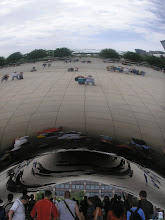Carl Ditters von Dittersdorf was born in Vienna in 1739 and is known as one of the premiere composers of the Viennese school according to his biography on Grove Music Online. His Symphony No. 1 in C Major “Die vier Weltalter” was composed in 1781 and is the first in a collection of twelve programmatic symphonies based on the Latin poet Ovid’s Metamorphoses, a collection of books which retold stories from Greek and Roman mythology. (Dittersdorf, Carl Ditters von, Grove Music Online). The works’ scoring is for a relatively large orchestra consisting of one flute, two oboes, two bassoons, two horns, two trumpets, harpsichord, timpani, and a string section of violin, viola, cello, and bass. The subject matter, a return to the classics of Greece and Rome tells us without listening that Dittersdorf’s Symphony is a Classical work. “Die vier Weltalter” translates to “The Four Ages of the World,” corresponding to the Gold, Silver, Bronze, and Iron Ages discussed in Ovid’s first book of the Metamorphoses. The Symphony is likewise divided into four movements, each representing an age of the world.
The first movement represents the “Golden Age,” described by Ovid as a time of peace and plenty, where people rely on faith, and there is “eternal spring” (More 1922). The movement opens with a simple, stately melody introduced by the strings and then restated by the whole orchestra. Dittersdorf uses somewhat of a sonata form with a repeated exposition. There is a contrast in the orchestration for the development section as Dittersdorf uses only violins, violas, celli, and bassoons to create a light, airy texture that gives the feeling of Ovid’s “eternal spring.” The form is then completed with a recapitulation of the theme presented by the full orchestra followed by great dynamic contrast in repeated melodic material as the final four bars are repeated before concluding the movement.
The second movement represents the “Silver Age” in which God has become all-powerful and created the four seasons, and man begins to become structured in his existence. The second movement is marked allegro e vivace and begins immediately with a motor rhythm in the upper strings which is then passed to the lower strings and winds. This motor rhythm conveys the sense of structure and forward movement described in Ovid’s “Silver Age.” The development shows great contrast in its exploration of minor tonalities and descending lines, and its use of only upper strings and winds, creating a somewhat icy feeling, suitable for winter, the third of the seasons. Again, the movement ends with a recapitulation of the theme, probably signaling the return of spring, culminating in a series of tonic arpeggios. For a movement depicting structure and order, Dittersdorf again chose to use the very standard and structured sonata form with a repeated exposition.
The third movement represents the “Bronze Age” in which man has discovered his violent side. The movement contrasts greatly by being entirely in the relative minor, giving weight to the sadness of the subject matter, and also in its use of the dotted-eight not followed by a sixteenth note rhythm present in some part through most of the movement. However, it is in minuet form and is therefore a dance movement, creating the strange irony of having violence depicted by a light, rhythmic dance. This comic irony gives the sense that this minuet movement is essentially being treated as what, by Beethoven’s time, will be a scherzo (Scherzo, Grove Music Online).
The final movement depicts the “Iron Age,” described by Ovid as an age in which greed and selfishness overtakes men and they go to war with each other to take the earth and exploit it for wealth. It is a time when all good is gone from the earth and evil reigns, and men cannot trust men. The movement opens with descending chromatic figure in the strings that become increasingly more rhythmic, leading to an announcement in the trumpet. The increasing rhythmic pattern returns, this time with timpani, and builds to a climax. This leads to a frenzied section with rapid ascending scales and offbeat rhythms in the violins. When the smoke clears, a new melodic theme is introduced by the upper strings and is then repeated with full orchestra with much more rhythmic intensity. In stark contrast with the second movement, the fourth movement depicts the violent fall of man and the loss of order. Man’s greed is an inescapable fate, shown by the accelerating rhythmic pattern that leads to the violent climax.
Dittersdorf’s Symphony No. 1 in C Major is a great programmatic work that exemplifies the elements of classical style. Melodies are simple, short, and tuneful, and we can hear contrast in dynamics and rhythms. For these reasons, in addition to the fact that it is a concise piece that holds the listener’s attention, I believe this piece should be included in the canon.
Bibliography
Grave, Margaret, Jay Lane. “Dittersdorf, Carl Ditters von.” In Grove Music Online,
http://www.oxfordmusiconline.com.ezproxy.mnl.umkc.edu/subscriber/article/grove/music/07861(accessed January 24, 2009).
Ovid, Metamorphoses, ed. Brookes More. Boston: Cornhill Publishing Co., 1922.
http://www.theoi.com/Text/OvidMetamorphoses1.html (accessed January 25, 2009).
Russell, Tilden A. “Scherzo.” In Grove Music Online,
http://www.oxfordmusiconline.com.ezproxy.mnl.umkc.edu/subscriber/article/grove/music/24827 (accessed January 31, 2009).
Subscribe to:
Post Comments (Atom)


No comments:
Post a Comment